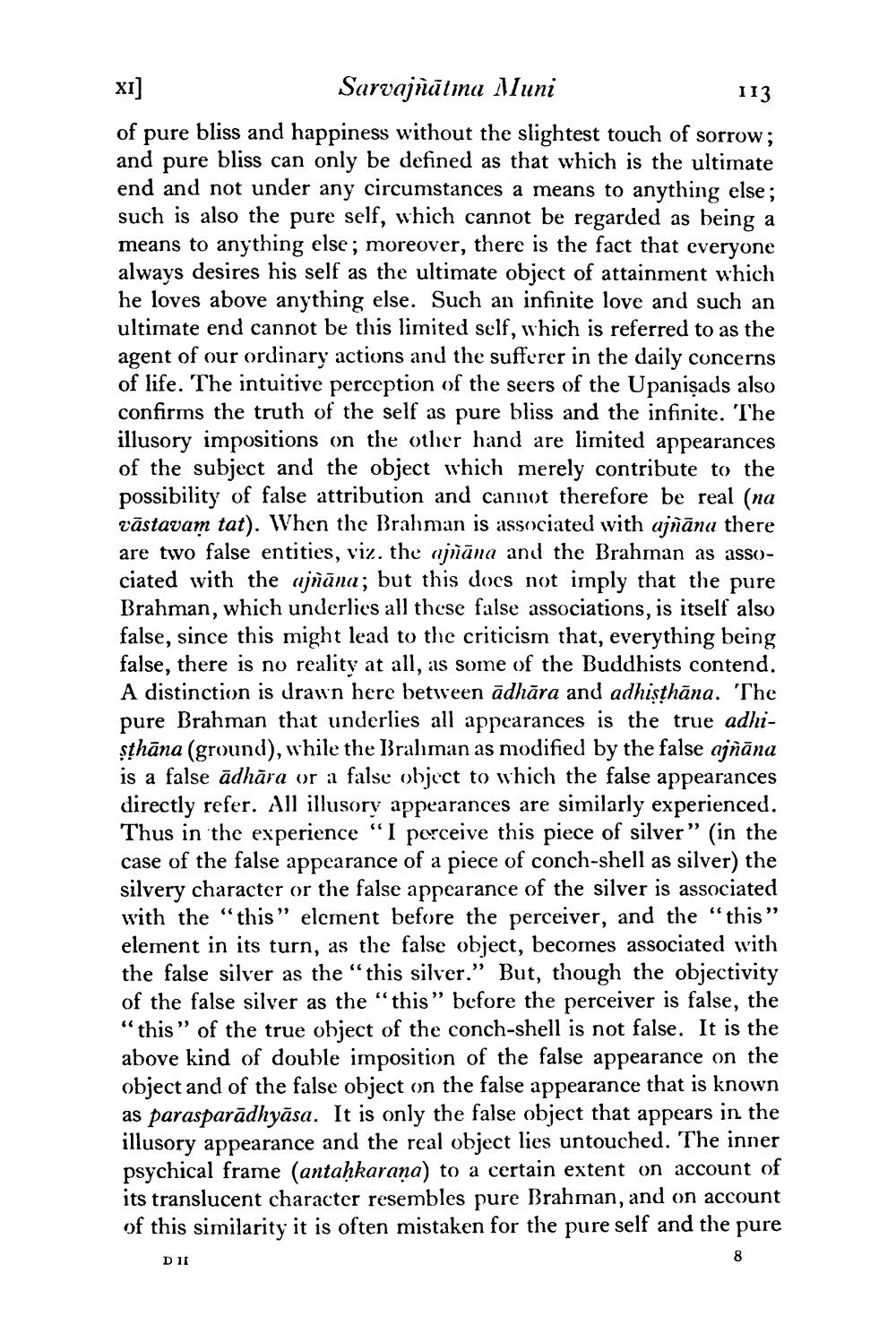________________
XI
Sarvajñātiu Muni
113 of pure bliss and happiness without the slightest touch of sorrow; and pure bliss can only be defined as that which is the ultimate end and not under any circumstances a means to anything else; such is also the pure self, which cannot be regarded as being a means to anything else; moreover, there is the fact that everyone always desires his self as the ultimate object of attainment which he loves above anything else. Such an infinite love and such an ultimate end cannot be this limited self, which is referred to as the agent of our ordinary actions and the sufferer in the daily concerns of life. The intuitive perception of the seers of the Upanisads also confirms the truth of the self as pure bliss and the infinite. The illusory impositions on the other hand are limited appearances of the subject and the object which merely contribute to the possibility of false attribution and cannot therefore be real (na vāstavam tat). When the Brahman is associated with ajñānu there are two false entities, viz. the ajñāna and the Brahman as associated with the ajñāna; but this does not imply that the pure Brahman, which underlies all these false associations, is itself also false, since this might lead to the criticism that, everything being false, there is no reality at all, as some of the Buddhists contend. A distinction is drawn here between ādhāra and adhisthāna. The pure Brahman that underlies all appearances is the true adhisthāna (ground), while the Brahman as modified by the false ajñāna is a false ādhāra or a false object to which the false appearances directly refer. All illusory appearances are similarly experienced. Thus in the experience "I perceive this piece of silver" (in the case of the false appearance of a piece of conch-shell as silver) the silvery character or the false appearance of the silver is associated with the "this" element before the perceiver, and the "this ” element in its turn, as the false object, becomes associated with the false silver as the “this silver.” But, though the objectivity of the false silver as the "this” before the perceiver is false, the "this” of the true object of the conch-shell is not false. It is the above kind of double imposition of the false appearance on the object and of the false object on the false appearance that is known as parasparādhyāsa. It is only the false object that appears in the illusory appearance and the real object lies untouched. The inner psychical frame (antahkarana) to a certain extent on account of its translucent character resembles pure Brahman, and on account of this similarity it is often mistaken for the pure self and the pure
D11




